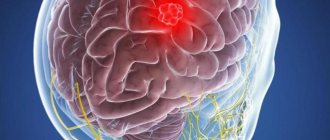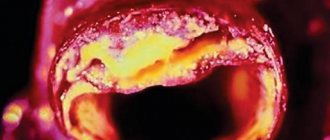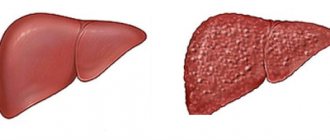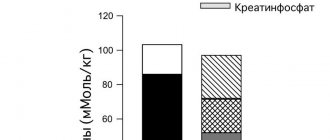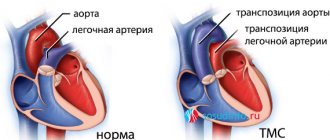Myxoma symptoms
Clinical signs of myxoma are determined by its location and size. Subcutaneous tumors differ:
- mobility;
- elastic consistency;
- smooth surface;
- the skin does not germinate.
A large myxoma of the bladder can provoke dysuria and urinary retention.
A growing myxoma of the heart eventually causes the symptoms of sudden heart failure, which has little response to drug treatment. A number of patients develop thromboembolism of various arteries (coronary, pulmonary, cerebral, mesenteric, retinal, etc.) with tumor fragments with a corresponding clinical picture. In addition, fever is common.
Reasons for development
The exact causes of cardiac myxomas have not yet been clarified, but there is a generally accepted list of factors influencing their development. You can find it below:
- hereditary predisposition to cancer;
- development of neoplasms in other places;
- genetic abnormalities;
- transseptal puncture;
- previous injuries to the heart muscle;
- balloon valvuloplasty of the mitral valve.
Sometimes the development of myxoma is influenced by chronic pathological processes. Because of them, the functioning of the heart is disrupted, which is a trigger (trigger mechanism) for the appearance of a tumor.
Diagnosis of myxoma
To verify the diagnosis, the following examination is necessary:
- Ultrasound or MRI/CT (visualize a formation in a particular organ, clarify its location, size, condition of nearby organs and tissues);
- histological examination of a sample or the entire neoplasm (reveals loose collagen and reticulin fibers, between which there is a mucus-like mass with rare elongated and stellate cells; in the case of secondary myxomas, areas of fibrosis, cartilage or fatty tissue may be detected; in primary myxomas, a positive reaction to mucoids is observed).
When removing the formation, the characteristic appearance of the myxoma is also of diagnostic importance. It represents:
- solitary or multiple nodes consisting of lobules;
- round shape;
- jelly-like consistency;
- diameter up to 15 cm;
- unclear boundaries with other tissues;
- when cutting a myxoma, threads of mucus stretch towards the scalpel;
- it is translucent;
- may have cysts.
But final verification is possible only after a histological assessment of the microscopic structure of the tumor.
Myxoma of the heart: what threatens the tumor and how to prevent its development?
Myxoma is a common type of heart muscle tumor, predominantly benign, accounting for 50% of all detected tumors in the myocardium. Despite ongoing research, the exact cause of myxoma has not yet been established. It is known for certain that it most often occurs in people aged 30 to 60 years. Women are 3 times more likely to develop myxoma compared to men.
Risk factors for developing the disease and types
Medicine does not have sufficient information to establish the specific factors that cause the development of cardiac myxoma. However, many scientists hypothesize that in most cases the disease occurs against the background of a genetic predisposition. Diagnosing the disease simultaneously in several members of the same family leads scientists to this conclusion. Despite this, most cases of myxoma are isolated, which cannot be associated with heredity. The disease is characterized by slow development and is prone to relapse.
The second risk factor can be considered injuries to the heart. The risk of a tumor increases significantly if, in addition to heart damage, oncological processes occur in the body.
Atrial myxoma on the left side is diagnosed more often, which is caused by a greater flow of blood from the lungs than on the right. In many cases, a tumor occurs in the area of the mitral valve, periodically opening and closing its opening, which leads to disturbances in the blood supply to the heart. The disease can block blood vessels, which leads to the development of blood clots.
8
24/7
The tumor has several varieties.
- Myxoma of the right atrium. The venous outflow of blood is disrupted. Symptoms appear after the tumor reaches 12 cm in diameter.
- Myxoma of the left atrium. The greatest impact falls on the lungs, as the flow of blood through their venous sections is disrupted.
- Tumor in the left ventricle. Leads to a narrowing of the lumen of the esophagus, slows down the removal of toxins from the bloodstream.
- Tumor in the area of the right ventricle. Leads to narrowing of the mouth of the lung trunks.
Symptoms
As the tumor grows, symptoms of the disease develop:
- after minor physical exertion, severe shortness of breath appears;
- body temperature stays within 37-37.5 °C;
- sudden weight loss;
- breathing becomes difficult during night sleep;
- sudden attacks of lightheadedness, dizziness, often leading to fainting;
- increased heart rate and high blood pressure;
- decrease in hemoglobin level in the blood;
- the appearance of acne and freckles on skin that was not previously subject to rashes;
- severe weakness and joint pain;
- the tips of the fingers become cold and acquire a bluish tint (on the arms and legs);
- blood in the sputum after coughing.
After the first signs of the disease appear, you must immediately consult a doctor, otherwise the pathology can be fatal.
There is a possibility of small particles breaking off from the formation, with subsequent spread through the vessels to other organs, which leads to blockage of the blood ducts. Complications may occur:
- myocardial infarction;
- stroke;
- complete or partial loss of vision.
Diagnostics
When visiting a cardiologist, it is necessary to describe the exact time of onset of the first signs of the disease, the location of pain, the frequency of manifestations and exacerbations of symptoms.
To diagnose cardiac myxoma, doctors prescribe the following examination:
- physical examination of the patient, listening to the heart - the doctor can hear noises characteristic of the development of a tumor;
- X-ray of the heart using a contrast agent;
- phonocardiography: allows you to analyze the work of the heart on a computer monitor;
- conducting echocardiography;
- CT or MRI is performed to confirm the diagnosis;
- analysis of the condition of the coronary bed (examination is mandatory for patients over 40 years of age, as a preventive measure before surgery);
- In the laboratory, cardiac catheterization is performed, which makes it possible to study the structure and etiology of the emerging tumor in order to prescribe effective treatment for myxoma.
Treatment at different stages
The formation can only be treated by removing the myxoma. Patients who did not delay the operation experienced fewer complications than those who advanced the disease. After the onset of symptoms, the pathology progresses quickly, and by pushing the disease to the last stage, the patient risks developing serious problems in the functioning of the organ, which can lead to death.
For myxoma of the heart, surgery is performed using the open method. Intervention sequence:
- bypass surgery is performed;
- valvuloplasty;
- valves are replaced;
- subsequent transplantation of artificial valves;
- correction of congenital or acquired heart pathologies.
8
24/7
This treatment method involves hospitalization of the patient for a period of 3 to 10 days. In severe forms of the pathology, inpatient treatment may take several months.
During surgery to remove cardiac myxoma, doctors perform a number of standard procedures. All items used in the operating room must be sterilized.
- The doctor carefully makes a longitudinal incision into the chest, and the bones of the sternum are then sawed open to expose the heart.
- Special clamps (retractors) are installed to keep the expanded chest open.
- Next, the doctor opens the pericardium (a kind of bag that protects the heart from external irritants).
- During the operation, the patient is fitted with an artificial blood circulation system.
- Once the tumor has been removed, the surgeon must restore normal blood circulation to the heart valve by artificially lowering the body temperature.
- Sutures are placed (they will be clearly visible on the patient’s body for several years).
- The patient is redirected to the ward for further monitoring of the condition.
Risk of possible complications
Any surgical intervention can cause complications and negatively affect the condition of the patient’s body. Often there is a need for a repeat operation.
Possible complications during surgery to eliminate myxoma:
- bleeding due to intravenous administration of anticoagulants to the patient;
- air embolism due to the use of a cardiopulmonary bypass system (a complication provokes the development of a stroke);
- difficulty trying to restore your heart rate;
- medical error during surgery;
- previously unknown anomalies in the anatomical structure of the patient, which caused an unexpected reaction to the actions of the medical staff.
Sometimes unexpected complications arise after a successful operation:
- profuse bleeding in the sutured area;
- development and spread of infections;
- stroke or pulmonary embolism due to blood clots;
- cardiac arrhythmia;
- development of heart failure and hypertension.
To be on the safe side after heart surgery and to prevent sudden death of the patient, the patient is monitored in intensive care for 12 to 48 hours.
Forecast
Patients with myxoma have a 40% risk of death. If treatment is not carried out, after the development of symptoms of the disease, life expectancy rarely exceeds 2 years.
After surgery, complete or partial removal of the tumor, the disease either completely recedes or the patient’s condition improves significantly. Isolated myxoma syndrome can provoke a relapse of the disease in 1-2% of cases, while the risk increases significantly if the disease is hereditary in nature - from 12 to 22%. Relapses are often associated with incomplete removal of the tumor.
Disease prevention
Myxoma develops as both an independent disease and a consequence of cancer. Therefore, its prevention should be comprehensive and comprehensive: support of the immune system, timely treatment and prevention of chronic skin diseases, pathologies of internal organs, especially the heart. To do this you need:
- avoid stressful situations;
- do not engage in activities with a high risk of injury;
- do not cause diseases, treat them in a timely manner;
- prevent the transition of viral, infectious or bacterial diseases to the chronic stage, which can cause heart dysfunction
Any external or mechanical impact on the heart can cause the development of a tumor - myxoma. Despite the fact that the formation is benign, as it grows it covers increasingly larger areas, which leads to the development of embolism.
After completion of surgical treatment, patients should undergo regular diagnostic examinations every 3-6 months.
Many people need to make changes to their daily lifestyle - increase physical activity and establish a proper diet. You need to follow the diet recommended by your doctor and choose individual exercises that will help maintain heart tone.
If any of the symptoms of myxoma are detected, it is important to immediately seek medical help; timely initiation of treatment will help avoid hospitalization and reduce the risk of relapses.
8
24/7
